
Editor's Note: This post continues a weekly series titled the Promised Land where author David G. Woolley sheds his bloggish sensibilities and delves into the research and inspiration behind the characters and story lines of his Book of Mormon Promised Land Historical Fiction Series. This week it's Lehi's 600 year tun prophecy, Alma's 400 year baktun prophecy, Samuel the Lamanite's 400 year baktun prophecy and the Mayan Calendar.
The start date for this Mayan calendar? 3,113 years before the birth of Christ. The end date? We're not exactly certain, but the scholarly consensus settles on the winter solstice December 21st, 2012. That's four years from now, the day ancient Mayans calculated the end date of their long count five thousand year calendar cycle. How would you react if the calendar your ancestors developed beginning around 550 BC was programmed to end its long internal count, a cycle of five thousand years, the same year a prophet of God told you that your civilization would be destroyed and your countrymen scattered? Pretty heady stuff. Ancient Nephites faced that very scenario. No wonder Book of Mormon scribes included frequent reference to their chronology.
Our modern Gregorian calendar has all sorts of subtle internal counts operating beneath the obvious day, week, and month counts that make up our solar calendar. Decade. Century. Anniversary. Millennium. Sesquicentennial. None of them appear on the calendar, but we count them and we keep track of them in our news, movies, books, celebrations and historical records. Take the year 1776, the birth of the United States. Two hundred years later in 1976 the US celebrated the bicentennial. It was a two hundred year shadow count operating beneath the days, months and years of our solar calendar beginning with a fixed point in history. The three hundred year count for the birth of the United States is celebrated in 68 years. Are you counting the days?
Remember Y2K a little over eight years ago? It marked the end point of a decade. The end of a century. The end of a millennium. Three major calendar counts ending on the same date. It raised a lot of curiosity. Were our computer systems really not programmed to process all those zeros in the year 2000? Was it possible that the US nuclear arsenal could malfunction due to some arcane programming flub? The new millennium, the end of a millennial calendar count, inspired end-of-the-world books and movies. Got people talking. Worrying. Praying. Or at least thinking about Christian, Hebrew, and even more profound, Book of Mormon end-times prophecy.
Similar curiosity-raising and sometimes prayer-inspiring calendar counts are found in ancient Mayan society. The usual suspects are obvious. Day (kin). Month (unial). Year (tun). There are others like the twenty year katun count similar to say, our decade, and the four hundred year baktun count related, due to its lenght, to our century. These calendar-related cycles may have influenced Lehi's 600 year prophecy. For six centuries Nephite chronologists made frequent reference to that inaugural Nephite event. These counts may also have been employed by Alma and Samuel the Lamanite, adding the weight of already-understood calendar counts to their 400 year prophecies. They were attention-grabbing, omen-related, and chronologically significant. The calendar counts began with significant historical events in Mesoamerican history and ended on identifiable, calculated conclusions in Mayan calendar counts, powerful enough to capture the hearts and minds of even the most hardened Nephite hearers.
Behold, I perceive that this very people, the Nephites, according to the spirit of revelation which is in me, in four hundred years from the time that Jesus Christ shall manifest himself unto them, shall dwindle in unbelief. Yea, and then shall they see wars and pestilences, yea, famines and bloodshed, even until the people of Nephi shall become extinct—
Yea, and this because they shall dwindle in unbelief and fall into the works of darkness, and lasciviousness, and all manner of iniquities; yea, I say unto you, that because they shall sin against so great light and knowledge, yea, I say unto you, that from that day, even the fourth generation shall not all pass away before this great iniquity shall come.
And when that great day cometh, behold, the time very soon cometh that those who are now, or the seed of those who are now numbered among the people of Nephi, shall no more be numbered among the people of Nephi. But whosoever remaineth, and is not destroyed in that great and dreadful day, shall be numbered among the Lamanites, and shall become like unto them, all, save it be a few who shall be called the disciples of the Lord; and them shall the Lamanites pursue even until they shall become extinct. And now, because of iniquity, this prophecy shall be fulfilled. (Alma 45: 10-14)
If you read and write ancient Mayan you'll recognize that the third concentric circle from the center (beginning with the circle around the face of the man sticking his tongue out) contains twenty word-glyphs, one for each of the days in the Mayan month. Go ahead and click on the calendar for a larger view. Beginning at the top of the third circle just left of center at about the 11:30 clock position there's an alligator glyph, the name for the first day in the Mayan month. Reading counterclockwise the translated name for the second glyph is the wind followed by house, lizard and serpent. Death, deer, rabbit, water and dog round out the first ten names of the twenty days in the Mayan month. Can you figure out the name for day number fifteen? What about my favorite Mayan day-name, number seventeen? Here's a hint.
I've always thought it funny that Book of Mormon critics claim the record inauthentic due to the mention of a dog when no such animal remains have been located in the archaeological record of ancient Mesoamerica. But here it is, the name of the tenth day in the Mayan month. Dog. Its also interesting that a 15th century catholic cleric, Padre Landa, wrote of the Mesoamerican dog that, "There is an animal which the native Mayans call chic, wonderfully active, as large as a small dog with a snout like a sucking pig". In a future post we'll discuss the Book of Mormon animal kingdom. For now let's stick with the day of the dog.
The term year has various meanings in different cultures. Even within our modern culture the definition varies. The count for a solar year is 365 days, 6 hours, 9 minutes, 9.54 seconds. Those mathematically pesky extra hours, minutes and seconds, about one fourth of a full day, are why we tack on an extra leap year day in February once every four years to keep our calendar count relatively close to the time it takes earth to travel around the sun. Dog years. That's a count for a pet that ages seven times faster than humans. One dog year is about 52 days. Logic dictates the impossibility of man's best friend circling the sun seven times every 365 days, but dog years are not a measure of solar orbits. They're a comparison, measuring the life-span relationship between a dog and its master. Dog years are a neat, mathematically simple, systematic comparative relationship between canine physical aging and human solar years. Like the US sesquicentennial and the Y2K millennium, dog years are a shadow count operating within our Gregorian calendar.
Ancient Mesoamericans, contemporaries of Lehi and his decedents, did the same thing. These ancient Mayans developed a calendar system to measure years in at least three different ways. The earliest definition the Mayans developed for a year was the Tzolkin. Thirteen months of twenty days in each month for a total of 260 days. Why two hundred and sixty days? Some scholars suggest its related to the time it takes to plant, harvest and store one growing season worth of maize. And what about the twenty days in a Mayan month? We're not exactly certain. Some scholars have suggested it was the number of toes and fingers used to count, but that marginalizes the advanced mathematics apparent in the Mayan calendar. These calendar gurus didn't stop their calculations when they ran out of fingers and toes. Twenty is an elegant number for calculations and these Mesoamerican calendar wizards were mathematicians of the highest order, playing around with dates 400 million years in the past and that many into the future.
The second Mayan definition for a year, the Tun, is a period of 360 days. Eighteen 20-day months. The Tun was the preferred year for making calendar calculations. It was a calendar of mathematical convenience. It was likely the calendar most familiar to the Mayan population. The standardized chronological instrument of Mesoamerica. It may also have been one of the approved Nephite calendars of time reckoning.
The number of days in a Tun year, 360, was a much simpler, more elegant number to divide, multiply and manipulate than was the third form of the Mayan year, the 365 day orbit-around-the-sun year known as the Haab. The Haab year consisted of eighteen 20-day months like the Tun year, but with an additional nineteenth 5-day month tacked onto the end of the year (or the beginning of the year according to some scholars). Those five extra days were considered unlucky. The Mayans didn't give them any names, but they weren't so unlucky that Mayans didn't use them to celebrate some of their most sacred feast days and offer sacrifices. During the more violent Mayan eras, human sacrifices.
The Mayans understood that the 365 day Haab year was the best count for reckoning the time required for the earth to travel around the sun. They were also very much aware how the 365-day Haab year correlated with the cycle of the moon, Saturn and Venus. Despite their astronomical awareness, the important dates in the Mayan world were tracked by the 360 day Tun year calendar system rather than the Tzolkin (260 days) or Haab (365 days) calendar counts. The Mayan Tun calendaring system uses the following day counts, month counts, year counts, double decade counts, and quadra-centennial counts in its calculations.
1 day = 1 kin
20 kin = 1 unial (a Mayan month)
360 kin = 1 tun (a Mayan year)
20 tun (7,200 days or kin) = 1 katun (chronologically significant like our decade)
20 katuns (144,00 days or kin) = 1 baktun (400 Mayan years and chronologically significant like our century)
For years scholars have obsessed over the Mayan calendar. Where did the pre-classic Mayans of 550 B.C. develop their complex mathematical understanding? Why is the Mayan calendar so similar to the Hebrew, Egyptian, and Enoch calendars? Some scholars have even suggested that the emergence of the Mayan calendar system is
 actually a mixing of calendar counts from different Mayan groups and the Tzolkin, Tun and Haab year counts represent pieces of three separate calendar systems. This sifting and mixing of calendars likely took place in Lehi's era and facilitated or possibly standardized the use of the Tun year calendar count by the converging populations as the accepted chronological instrument while still allowing for counts familiar to all users.
actually a mixing of calendar counts from different Mayan groups and the Tzolkin, Tun and Haab year counts represent pieces of three separate calendar systems. This sifting and mixing of calendars likely took place in Lehi's era and facilitated or possibly standardized the use of the Tun year calendar count by the converging populations as the accepted chronological instrument while still allowing for counts familiar to all users.By the time the Book of Mormon account reaches the first century before Christ it is apparent that the scribes were concerned with detailed chronology. The book of Helaman, among others, is filled with chronological data. Early Nephites used Lehi's departure from Jerusalem as the beginning reference for their tracking of time. Later they adopted a secondary reference——the reign of judges over the Nephites. In the year that signs of the birth of Christ were shown to Nephites living in Mesoamerica, the Book of Mormon refers to the date using both events as calendar reference points.
Now it came to pass that the ninety and first year had passed away and it was six hundred years from the time that Lehi left Jerusalem; and it was in the year that Lachoneus was the chief judge and the governor over the land (3 Nephi 1:1).
Recent advances in Bible scholarship allows us a fair degree of certainty regarding the date King Zedekiah began his reign in Jerusalem. By interlocking the dates beginning with the end of the Middle Ages and then back through Roman Empire times, Hellenistic rulers, the Persian empire, and the records of Assyrian Kings and then correlating them to sun and moon eclipses mentioned in association with those monarchies, astronomers can anchor the entire run of time to our modern calendar. The footnote in the opening pages of the Book of Mormon indicates that Lehi left Jerusalem about 600 BC. Precise dating indicates that Nephi actually began his account with events that took place in the Hebrew year overlapping our modern calendar year of 597-596 BC. So why the discrepancy of four years? Is it significant? Likely yes when you look at both the start date for Lehi's 600 year prophecy (the first year of King Zedekiah's reign) and the end date of Lehi's prophecy (the birth of Christ).
In 500 AD the monk Dionysius was assigned the task of calculating the precise year for the birth of Christ in order to realign the calendar to make that event the meridian of time. The distinction of before Christ (BC) and after Christ (AD) were perfect designations. His calculations were not. Five hundred years after the fact and living in relative isolation Dionysius lacked enough historical data to be
 accurate. Today, using three data points, the Jewish King Herod’s death, the Roman taxation, and astronomical star data, most scholars have settled on the years overlapping 4 or 5 BC as the date for Christ’s birth.
accurate. Today, using three data points, the Jewish King Herod’s death, the Roman taxation, and astronomical star data, most scholars have settled on the years overlapping 4 or 5 BC as the date for Christ’s birth. Historians agree that King Herod who ruled at the time of Christ's birth died in 4 BC. The Book of Luke names a ruler in a neighboring Roman province at the time of the taxation that required Mary and Joseph to travel to Bethlehem (Luke 2: 2-3). There is also astronomical evidence to support the appearance of a new star that appeared in the skies over Bethlehem marking the location of the nativity (Matthew 2:9-10, 3 Nephi 1:21).
The Book of Mormon specifies six hundred years between the first year of the reign of Zedekiah and the birth of Christ (1 Nephi 10), while historical records allow only 593 years (the difference between 597 BC and 4 BC). If Lehi, his son Nephi and the Nephite chronologists after them were influenced by the Mayan Tun calendar system, 600 Mayan years of 360 days each explains the discrepancy between Lehi's prophecy and our modern-day calendar reckoning. If you count off 600 Mayan Tun years from the first year of Zedekiah's reign in 597-596 BC, those 216,000 days bring you into the year overlapping 5-4 BC on our modern calendar——the most likely date for Christ's birth.
Omens and prophecies were commonly phrased among the Mayans in terms of the beginning or ending of whole calendar units. Alma's prophecy fits this omen-calendar mind-set perfectly when he prophesied that the extinction of Nephite civilization would occur, "in four hundred years from the time that Jesus Christ shall manifest himself unto them (Alma 45: 10-14). The tun (day) and unial (month) were common counts. Nephites experienced them frequently during their lifetime. The katun (20 years) and the baktun (400 years) were not. Life expectancy among the Mayans was around forty plus years and a Nephite likely celebrated about two katuns from birth to death. Few lived to see the completion of a baktun. The long count would have had deep meaning for Mesoamericans and Alma likely choose his words for their impact on the hearer.
Samuel the Lamanite announced the same prophetic baktun time period when he said, "Behold, I, Samuel, a Lamanite, do speak the words of the Lord which he doth put into my heart; and behold he hath put it into my heart to say unto this people that the sword of justice hangeth over this people; and four hundred years pass not away save the sword of justice falleth upon this people (Helaman 13:5).
To a Nephite living in Mesoamerica, Alma and Samuel's prophecies were profound. They fit the mathematical phraseology of the accepted calendar of reckoning. It is significant that two Mesoamerican prophets declared the end of Nephite civilization at the end of a baktun. Significant enough to raise Nephite curiosity. Get Nephites talking with their neighbors. Get them worrying. Stand their Nephite hair on end. Maybe even get them praying about the possibility that Alma and Samuel might actually be prophets sent by God. It certainly inspired ancient Mesoamericans to write at least one book and possibly many others. No wonder Book of Mormon prophets and scribes repeated these calendar-related prophecies so often.
Lehi's six hundred Tun prophecy along with Alma and Samuel's 400 year Baktun prophecy define Nephite history in neat, mathematical terms. It is very Mayan. Very Mesoamerican. Very Nephite. It’s also very Hebrew. Israeli scholar Yehudi Radday writes that the history of Israel falls into a symmetrical pattern.
And why not? Lehi and the Nephite chronologists who followed him were merely Mesoamericans with a prophetically Hebraic view of time.
__________________________
Join author David G. Woolley at his Promised Land Website.

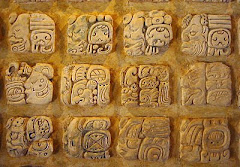




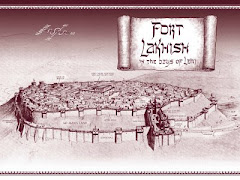



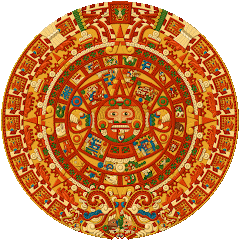



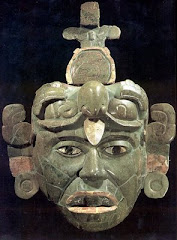



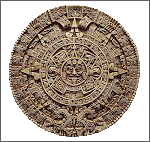

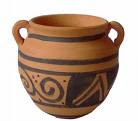
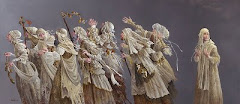




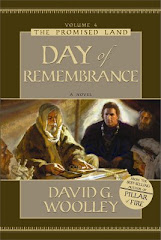




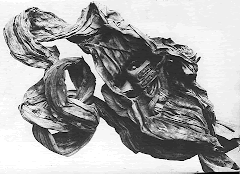





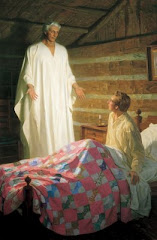


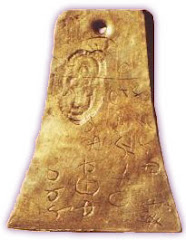


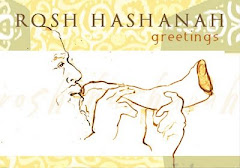


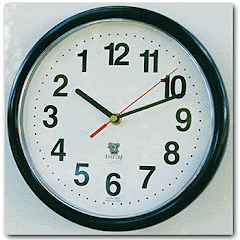


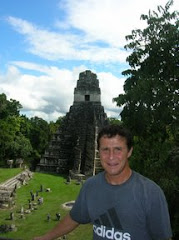


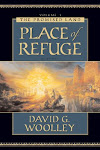
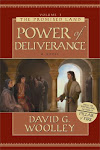

7 comments:
Fascinating! I always learn something interesting from your blogs.
Hi Jennie:
Thanks for stopping by. You actually read the unedited version, before I finalized things. Now everything is a little bit more understandable. Too bad our writing doens't appear on the page in already-edited form.
Understanding the calendar considerations of the Nephites makes the Book of Mormon that much more applicable, understandable and prophetic.
Thanks again for stopping by.
All the best,
Dave Woolley
I agree with Jennie, I always learn from you, and this is very fascinating indeed.
Math was never my strong point and my brain has a habit of zoning out when numbers start being mentioned, so I had to read this a couple of times. I'll come back to it a couple more times so that I can see what more I can learn and understand. Thank you so much for sharing your knowledge with us.
(My guess for the seventeenth symbol is thunder and Brandi says earthquake.)
Hi Sandra:
I'll wait to share the answer just in case other posters want to take a stab. Very interesting guesses.
I just added some stuff to the post so when you go back to read it don't think wow, did I miss all that in the first reading.
It was stuff that makes reading it a little more clear.
Thanks for reading.
Dave Woolley
Wow! That's a lot to wrap your brain around. Very interesting stuff. It's amazing how it all lines up.
I think the 15th is Eagle or Falcon and 17th is Earthquake.
So, David, How long are you going to wait to give us the answer?
Sorry about the delay on the name for the fifteenth and seventeenth days in the mayan month. There's one correct guess for day 15: Eagle. And a couple of correct guesses for day 17: earthquake.
Brandi guessed right no Eagle. And Kim, you lucky little scholar you, got both day-names right.
Well done everyone. Thanks for joining me in this little foray into ancient Mayan calendar reckoning.
Post a Comment